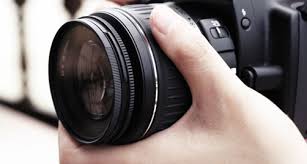Getting a good exposure generally depends on understanding light and using a meter to measure the light in a scene.
Reflected light and incident light meters
Metering reflected light is exactly what it sounds like – you’re measuring the light bouncing off of the subject. Incident light is measuring the hitting the subject (before it bounces back to the camera.)
A meter helps to determine both the aperture and shutter speed. In some cases, the meter gives you a digital read out of the appropriate aperture at a given shutter speed. Some meters – especially older ones – uses a needle which you match to either a line or a second needle. Its a good idea to either get the sales person who sells you the camera or hand held meter to show you how to get the most out of it or can read the manual that comes with the meter or camera.
A camera’s internal meter always measures reflected light. In most cameras, this works very well for almost all the scenes most of us shoot. The problem comes when shooting a dark on dark subject or light on light subject. This is covered in other lessons, but the essential idea is that the meter thinks the whole world is 18 per cent grey. So, if you’re shooting a black cat on a dark chair, the meter will think it should be a lot lighter than that and will overexpose the image. Conversely, if you’re shooting snow on an overcast day, the meter will try to darken it to grey and it will underexpose the subject – even more than the usual grey of the day. Or an egg on a white table will come out muddy grays.
Understanding that, you can usually change the exposure to be more realistic.
Or, you can get a handheld meter which measures the light hitting the subject (incident light) and it doesn’t matter if the subject is white, grey, black, red or any other colour.
On most new style hand held meters, there is a white dome covering the sensor which is used for measuring incident light.
As a rule, the best way to measure incident light is to stand beside the subject and point the white dome towards the camera. This gives a good overall exposure. You can can also point the meter towards the light (or brightest light if there’s multiple light sources) to absolutely keep from over exposing the scene. This is especially good when doing a portrait. However, if the brightest light is coming from overhead and you’re shooting a portrait, point the meter at the camera or you’ll get deep dark shadows in the eye sockets which will make your subjects look like they have raccoon eyes.
If the subject is too far away to easily stand beside, you can find a spot with similar light to that hitting the subject, and measure the light the same way.
Spot meter 
Another type of meter is the “spot meter” which can be hand held or built into many higher end cameras and is useful for more distant scenes you can’t just walk up to and use an incident meter. This measures reflected light, but only in a very small area – typically 1 to 3 degrees which is a small spot in an overall scene. The handheld meters tend to be the tighter 1 degree measurement. With a spot meter, you can determine the brightest point in a distant scene, as well as the darkest. Then, you can average the exposure between the two and hope to keep the highlights and shadows, or you can decide one is more important than the other. Those are choices you have to make yourself.

Flash meter
Many modern handheld meters include the ability to measure the light put out by a flash system – whether small portable flashes or big studio style flashes. Most photographers use light meters using incident light. Because flashes are very short exposure, the important part is the aperture. In most situations, especially using studio flashes, any other light – such as lamps, etc – will be so under exposed you won’t see the light in the picture.
You can, however, also measure any ambient light and adjust the shutter speed to make any background light the same exposure as the flash or slightly under.
No comments:
Post a Comment